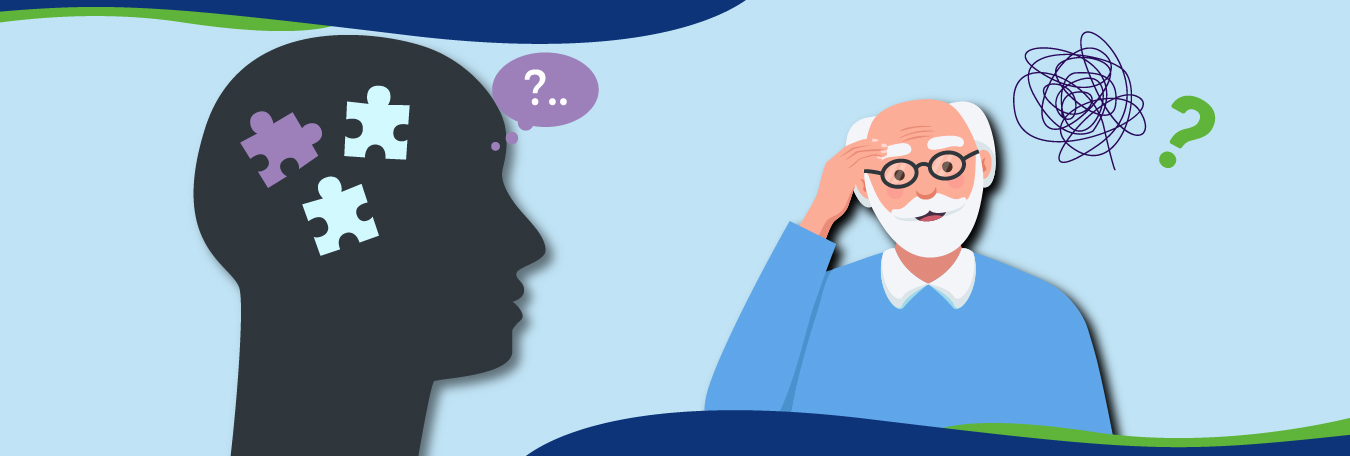Perhaps, you were reading about PTSD, which is also known as post-traumatic stress disorder and you came across the word complex. Then you realize that it is another form of PTSD, which is much more intense and debilitating usually stemming from complex and prolonged trauma. Let’s talk about it in much more detail and finally lay to rest the fluff related to PTSD vs cPTSD, while also uncovering cPTSD symptoms in the words below.
Before cPTSD vs PTSD, Let’s Define the Later!
PTSD, or post-traumatic stress disorder as it is known in its non-abbreviated form. PTSD is a type of anxiety disorder, which is caused by an extremely traumatic and stressful event, either by the virtue of being a witness to that event or the affected individual being part of that event. These events can range from man-made car collisions or plane crashes to natural occurrences like a raging illness like cancer, bereavement, or isolated acts of violent or sexual abuse (1). This will help you understand the difference between PTSD and cPTSD.
Symptoms include recurring flashbacks, nightmarish dreams, extreme anxiety, hypervigilance avoidance behavior, and highly uncontrollable thoughts. These extreme symptoms tend to interfere with the day-to-day functioning of the affected individual.
Two other conditions are closely related to this type of mental condition:
Acute Stress Reaction: When similar symptoms to PTSD arise but are earlier than expected and go away in a month or so, that is called acute stress disorder(2).
Complex Post-Traumatic Disorder or cPTSD: This is the other closely related PTSD subtype. We have mentioned what it is but in order to understand what is the difference between PTSD and cPTSD, we have to discuss it comprehensively.
Read More: PTSD: Symptoms, Causes, Diagnosis and Treatment
Defining cPTSD:
Officially it is not part of the Diagnostic and Statistical Manual of Mental Disorders, Fifth Edition (DSM-5-TR), and as a result is not identified as a distinct condition. But C-PTSD has been gaining attention in the years since it was first described in the late 1980s(2). While it is indeed similar and has common symptoms with PTSD when it comes to PTSD vs cPTSD, there is a difference between PTSD and cPTSD: the symptoms are more intense and extreme, which are in turn brought on by traumatic events that are prolonged and complex in the sense that they are persistent over that strand of time(3), for example, child abuse – physical or sexual, domestic violence, becoming a victim of human or sex trafficking, war, genocide and frequent community violence, and is commonly seen in marginalized communities.
A good example of this is police brutality against black people. The harmful effects of oppression and racism found in community violence can add additional layers to complex trauma experienced by individuals. This is further compounded if the justice system is involved and fails to guard their rights and freedom properly(4). Unlike PTSD, which develops regardless of what age you are when the trauma occurs, C-PTSD is typically the result of childhood trauma.
Similar to PTSD, these are the cPTSD symptoms that come as a result:
- Excessive Anxiety.
- Recurring flashbacks or nightmares.
- Avoiding behavior, where the affected individual situations, places, and other things related to the traumatic event.
- Impulsivity or aggressiveness are part of the heightened emotional responses from the condition.
- Persistent difficulties in sustaining meaningful relationships.
Read More: Is PTSD a disability
cPTSD vs PTSD: Brain Neurology
As we have mentioned before, traumatic events that are prolonged and have been persistent in terms of instances, especially during childhood, will be prone to developing cPTSD, while PTSD can evidently be caused by a single traumatic event. As aforementioned, these events can range from child abuse to war and frequent attacks on a particular community. But in addition to that our brains can change in response to trauma. Studies(5) suggest that trauma-based changes are seen as permanent changes in key areas of your brain, including your:
- Amygdala: The part of your brain that handles fear and other emotions.
- Hippocampus: This is the part of your brain that’s largely involved in learning and memory.
- Prefrontal cortex: The brain area responsible for your executive functions, such as planning, decision-making processes, and social behavior.
What is the Difference between PTSD and cPTSD?
When talking about PTSD vs cPTSD in adults, we should also talk about another adult-oriented mental disorder, which also bears a resemblance to both of the aforementioned disorders: borderline personality disorder. The similarities are so much that some experts believe that CPTSD, PTSD, and borderline personality disorder (BPD) may exist on a spectrum of trauma-related mental health conditions that vary in the severity of their symptoms which tend to be similar in nature(6).

The biggest difference in either of these is the length of trauma and the symptoms. As mentioned before, PTSD develops from short-term trauma, cPTSD develops from persistent and long-term trauma and BPD which is a mental illness of excessive unregulated emotions based around fear of abandonment, but its onset is usually in adulthood and subsides with age.
Read More: Top facts to know about PTSD and memory loss
Symptoms-wise, all three of these are extremely similar, for example, impulsive behavior, feelings of worthlessness, and difficulty forming lasting relationships are often displayed in them. But the distinction is made on the length and intensity of these symptoms. In that regard, PTSD takes the middle ground, BPD has the lowest intensity and severity of symptoms and cPTSD has the highest.
A Side by Side Comparison
| Comparisons | cPTSD | PTSD |
|---|---|---|
| Symptoms | More intense symptoms of PTSD | Nightmares, flashbacks, extreme anxiety, avoidance behavior, hypervigilance, and highly uncontrollable thoughts |
| Causes | Long-Term Traumatic Events | Isolated Traumatic Events |
| Timeframe | Usually erupts in childhood | Can come at any age |
| Prevalence | Often occurs in those who are part of the marginalized community | Only a single yet highly traumatic event is enough to bring up its diagnosis |
How Does PTSD vs Complex PTSD Fare In An Adult?
In addition to the symptoms of PTSD, there are additional cPTSD symptoms in adults (7), which for your inconvenience have been listed below:
Difficulty in emotion regulation. People with C-PTSD tend to lose control over their emotions, which is displayed as explosive anger, persistent sadness, depression, and suicidal thoughts(8).
Negative self-view. Affected individuals always view themselves in a negative light. They tend to feel helpless, guilty, or ashamed(9). They often have a sense of being completely different from other people.
Difficulty in sustaining relationships. Relationships always suffer due to difficulty trusting others and a negative self-view(10). Affected individuals tend to avoid relationships or develop toxic relationships because that is what they have learned in the past.
Trauma Detachment. This can be separated into two halves: derealization and depersonalization. A person may disconnect from themselves (depersonalization) and the world around them (derealization). Some even tend to forget it altogether.
Loss of meaning in life (a symptom of depression). This can include losing the meaning of one’s core beliefs, values, religious faith, or hope in the world and other people.
Read More: A Complete Guide To The Signs Of PTSD In Teenage Girl
Treatment of PTSD vs cPTSD
When it comes to treating PTSD vs cPTSD, treatment is necessary and postponement will only lead to intensification of cPTSD symptoms or even when it comes to PTSD vs complex trauma in general. Psychotherapy and medication are the go-to ways to get this type of disorder treated. Generally, whatever works for PTSD, can also work for cPTSD, which indeed are psychotherapy and medication(11).
Medications such as antidepressants are often used to treat complex PTSD. Examples include Prozac (fluoxetine), Paxil (paroxetine), and Zoloft (sertraline). These are adept at reducing symptoms of C-PTSD, such as anxiety or depression, especially when used in combination with psychotherapy.
Psychotherapy (also called “talk” therapy) is used to identify traumatic memories and negative thought patterns in affected individuals and to turn them into positive ones and ones that are realistic. This can help them learn to cope more adaptively to the impact of their trauma. Two extremely suitable types of therapies are eye movement desensitization and reprocessing (EMDR), and trauma-based cognitive behavioral therapy. EMDR uses eye movements guided by a mental health professional to process and reframe traumatic memories. This process is used to help reduce the negative feelings associated with the traumatic memory, over time(12). Trauma-based CBT can also identify and reframe problematic thinking patterns and learn symptom management skills and can include its additional type – exposure therapy, as well if the need comes to be.
Read More: PTSD in children: Causes, Diagnosis and Treatment
Wrapping Up of the c-PTSD vs PTSD Debate!
This is the end of the line here but we can ensure, this information is more than enough to guide you toward a recovery process promptly. If you need more information on how treatment warrants PTSD vs cPTSD, then you can contact the Inland Empire Behavioral Group. You can also book an appointment with us if you have any questions like, “What is the difference between PTSD and cPTSD?”, “What is complex PTSD vs PTSD?”, “Is cPTSD worse than PTSD?”, or “Do I have PTSD or cPTSD?”. Other conditions such as clinical depression, psychosis, anxiety, or OCD can be treated with the treatment methods described above and alternative ones like telehealth psychiatry.




